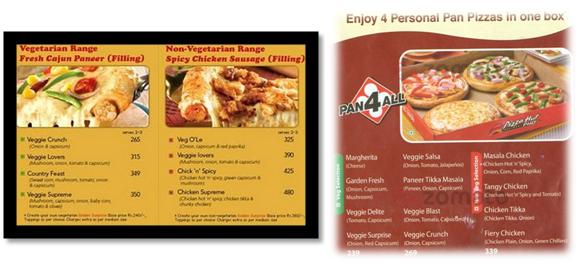Standardize or Localize- A better way to lead markets
Much has already been said and done regarding one of the biggest challenges that leading brands of the world face today, ‘ What does it take to create a sustainable brand across different countries and areas of operation’. The two obvious alternatives which are always there as guiding stars for these brands are, standardization and localisation of processes and products. As they say, a mid-way is the most pragmatic way to tread ahead in. Do any of these strategies hold true as an optimal solution to these brands which are still battling this evasive dilemma. Do they need to modify the present value chain and create novel product/service offerings? Can they ensure the transference of our best practices as they diversify and explore newer markets? All these questions are but obvious to emanate in the mind of a brand manager when he/she is in search of a better pavement to enhance the brand value of the company or its brands. In this article my aim is to discuss all these aspects, substantiating each of them with instances of the practices adopted by some of the brands in the respective context, and stretching the discussion to suggest different ways and approaches to help break free of this enigma.

An eagle’s eye view of the current practices and approaches adopted by big brands in order to help them escalate there businesses, suggests that, it makes more sense for service industries to take the path of localization rather than for a product industry. The fast food industry is the best example to reinforce the significance of this statement provided by many industry intellectuals. McDonalds, Pizza Hut, Cafe Coffee Day are some of the glaring instances in this service category, in that they have different menus for people of different countries of operations, and sometimes even for different geographical regions within the same nation(if the nation is culturally diverse, like India), to suit the appetite and taste buds of the different customers. But the offerings are not without some standard offerings e.g. a Pizza Hut store in India you would find the menu adorned by Pizzas pertaining to the locally preferred flavours like Kadhai Paneer and Kadhai Chicken, and at the same time they have Veggie Supreme and Chicken Supreme which are some of their standard eatables. Along with this they have also have increased their product range recently, with a wide gamut of offerings apart from their trademark Pizzas. They include Pastas, soup, salads, desserts etc, an indication of product diversification and more so of providing a power of choice in the hands of the customers. This clearly depicts the balanced or mid-way approach as mentioned earlier that some of the service or catering companies have recently adopted.

Another service industry which has endeavoured to preach this practice of localization to some extent is the telecom industry wherein several players had introduced top up cards/easy recharges of smaller tariffs (as low as Rs.4 by Vodafone) owing to the fact that Indians (especially those belonging to the lower middle class and lower classes) don’t have the tendency to spend a huge amount altogether in a go as far as their spend in wireless communication is concerned. Also, the 1 paisa per second plan was an innovative pricing approach adopted by almost all the current telecom players in the country, which was formed keeping in mind the Indian mentality or fundamental consumer belief system of paying for the extent to which you have used a particular service. All these strategies have definitely done a world of good for increasing the revenues of most of the telecom players.

Talking about all leading brands that encompass various product categories, usually standardization of product designing is the most prominently chosen way. Talk about big MNC players dealing in different product categories, for instance in the detergent industry, Unilever’s Surf and P&G’s Tide are standardized products in terms of product constituents all across their zones of operation, however marketed under different names in different countries (Surf Excel is named by this name in India and Pakistan, Omo in Brazil, and Persil and UK in France). However, the Surf Excel Bar (previously Rin Supreme Bar), which is a nil mineral bar launched by Unilever (HLL to be more particular)in 2006, is only sold in India and among the market leaders in the detergent bar category. So, even here we can observe a faint element of localization approach percolating the overall production and marketing strategy of Unilever.
Over the years the automobile industry has shown a pattern of standardization as far the as the end product offering is concerned. It’s only through strategic alliances and joint ventures the automobile giants have managed to produce localised products, For instance Hero Honda CBZ(successful), Maruti Suzuki Alto(successful), Mahindra-Renault Logan(not so successful) etc, and not independently.
The scenario involving business markets or organization to organization marketing (also termed as B2B Marketing) is more to do with localization especially for those suppliers whose operations encompass different geographical markets. In their case derived demand or the demand emanating from the final or end customers in a particular market which helps the suppliers decide what constituents they need to supply in order to aid their clients to provide the required product or service offerings. The example which can be taken in this case is that of Cummins. In 1962, Cummins set up its Indian subsidiary in Pune in manufacturing, design and distribution and service of automobile parts, fuel and power generators. Some of their major clients in India are Ruchi Soya, Laxmi Machine Works, Sundaram Fasteners, Gujarat electrical board, Sahara India TV, Jaihind Spinning Mills etc. Irrespective of the category of commercial customer they fall in (whether user, OEM or dealer/distributors) it’s the quantity, quality and service metrics and expectations of the end customers that is us, for instance the engine specifications that a car user desires for, the Horsepower requirement of a generator/inverter user that is taken into consideration and eventually designed according to the needs of the end customer.

Conclusion
Having gained a few insights on both standardization and localisation strategies adopted by some of the successful companies, it can be inferred that the extent of standardization or localisation that a company follows depends upon the following factors:
- The type of industry a company deals in (whether product and service, business markets /B2B, durables or non-durables etc.)
- Its global operation and reach.
- Different customer needs and expectations existing within a same country.
- Companies own goals and objectives(short-term and long term)
However, irrespective of the above mentioned factors, with most of the big brands going international by spreading their scale and size across diverse markets, the most viable and prudent approach is to have a balanced form of strategy, i.e. catering the current local needs juxtaposed by standard products/services to ensure the brand value and brand image doesn’t get marred by any form of cannibalization, and serves the different target segment judiciously and effectively.
This article has been authored by Rohit Gupta from NMIMS
Views expressed in the article are personal. The articles are for educational & academic purpose only, and have been uploaded by the MBA Skool Team.
If you are interested in writing articles for us, Submit Here
Share this Page on:
What is MBA Skool?About Us
MBA Skool is a Knowledge Resource for Management Students, Aspirants & Professionals.
Business Courses
Quizzes & Skills
Quizzes test your expertise in business and Skill tests evaluate your management traits
All Business Sections
Write for Us